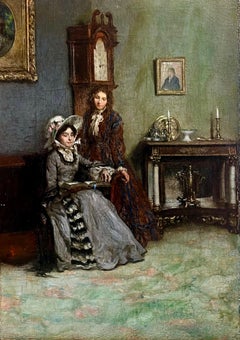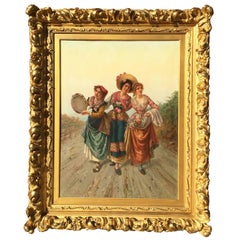Late 19th Century Figurative Paintings
Victorian Late 19th Century Figurative Paintings
Oil
Academic Late 19th Century Figurative Paintings
Oil
Late 19th Century Figurative Paintings
Canvas, Oil
Late 19th Century Figurative Paintings
Oil
Folk Art Late 19th Century Figurative Paintings
Oil
Late 19th Century Figurative Paintings
Oil
Late 19th Century Figurative Paintings
Oil
Tonalist Late 19th Century Figurative Paintings
Paper, Watercolor, Board
Realist Late 19th Century Figurative Paintings
Oil, Photographic Paper
Romantic Late 19th Century Figurative Paintings
Canvas, Oil
Late 19th Century Figurative Paintings
Canvas, Wood, Oil
Art Nouveau Late 19th Century Figurative Paintings
Porcelain, Oil
Post-Impressionist Late 19th Century Figurative Paintings
Canvas, Oil
French School Late 19th Century Figurative Paintings
Oil, Canvas
Old Masters Late 19th Century Figurative Paintings
Oil
Symbolist Late 19th Century Figurative Paintings
Oil
Realist Late 19th Century Figurative Paintings
Canvas, Oil
Academic Late 19th Century Figurative Paintings
Canvas, Oil
Impressionist Late 19th Century Figurative Paintings
Canvas, Oil
Realist Late 19th Century Figurative Paintings
Canvas, Oil
Impressionist Late 19th Century Figurative Paintings
Canvas, Oil
Post-Impressionist Late 19th Century Figurative Paintings
Oil
Impressionist Late 19th Century Figurative Paintings
Canvas, Oil
Victorian Late 19th Century Figurative Paintings
Canvas, Oil
Late 19th Century Figurative Paintings
Canvas, Oil
American Realist Late 19th Century Figurative Paintings
Canvas, Oil
American Modern Late 19th Century Figurative Paintings
Canvas, Oil
Barbizon School Late 19th Century Figurative Paintings
Oil
Baroque Late 19th Century Figurative Paintings
Canvas, Oil
Contemporary Late 19th Century Figurative Paintings
Canvas, Oil
French School Late 19th Century Figurative Paintings
Oil, Canvas
Hudson River School Late 19th Century Figurative Paintings
Canvas, Oil
Late 19th Century Figurative Paintings
Canvas, Wood, Oil
Late 19th Century Figurative Paintings
Watercolor, Paper
Late 19th Century Figurative Paintings
Canvas, Oil
Late 19th Century Figurative Paintings
Oil
Impressionist Late 19th Century Figurative Paintings
Oil, Canvas
French School Late 19th Century Figurative Paintings
Oil
Impressionist Late 19th Century Figurative Paintings
Oil
Romantic Late 19th Century Figurative Paintings
Oil
Realist Late 19th Century Figurative Paintings
Canvas, Oil
Romantic Late 19th Century Figurative Paintings
Oil
Other Art Style Late 19th Century Figurative Paintings
Canvas, Oil
Academic Late 19th Century Figurative Paintings
Canvas, Oil
Late 19th Century Figurative Paintings
Oil
Academic Late 19th Century Figurative Paintings
Oil
Academic Late 19th Century Figurative Paintings
Wood, Oil
Late 19th Century Figurative Paintings
Oil
American Impressionist Late 19th Century Figurative Paintings
Watercolor, Laid Paper
Other Art Style Late 19th Century Figurative Paintings
Canvas
Victorian Late 19th Century Figurative Paintings
Oil
Academic Late 19th Century Figurative Paintings
Canvas, Oil
Barbizon School Late 19th Century Figurative Paintings
Oil
Victorian Late 19th Century Figurative Paintings
Canvas, Oil
Late 19th Century Figurative Paintings
Canvas, Oil
Late 19th Century Figurative Paintings
Oil
Late 19th Century Figurative Paintings
Oil
Late 19th Century Figurative Paintings
Oil
Late 19th Century Figurative Paintings
Oil
Academic Late 19th Century Figurative Paintings
Canvas, Oil
Read More
See Kent Monkman’s Magical Realist Take on Frontier History
With a solo show at the Denver Art Museum and a commission from the Met, the Cree Canadian painter has become an international sensation.
Cecilia Vicuña Merges Politics, Science and Spirituality in Her Poetic Art
The Chilean creator, who has been living in exile in New York for decades, is having a major moment, receiving the biggest exhibitions, commissions and awards an artist could dream of.





